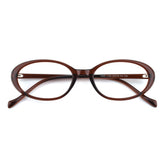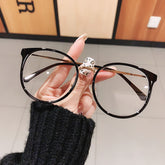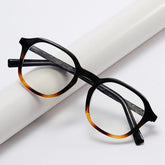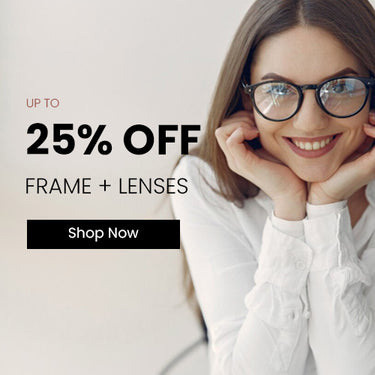Sports Protective Glasses: Prevent Potentially Blinding Eye Injuries
Sports are a great way to stay active and healthy, but they also come with risks—especially to your eyes. Whether you're a professional athlete or a weekend warrior, protecting your eyes during sports is crucial. Sports glasses are specially designed to shield your vision from impacts, UV rays, and debris—preventing injuries that could lead to temporary discomfort or even permanent blindness.
- Why wear sports glasses?
- Why are regular glasses not enough for sports?
- How do sports protective glasses help?
- Which sports require protective glasses?
- How to choose the right sports protective glasses?
- Prevention is always better than cure.
1. Why wear sports glasses?
Eye injuries can occur in various settings, including:
- Workplace hazards: Construction, manufacturing, welding, and laboratory work expose workers to dust, metal fragments, and chemical splashes.
- Home and DIY projects: Power tools, lawn mowing, and cleaning chemicals can cause accidental eye damage.
- Sports and outdoor activities: High-impact sports, biking, and even UV radiation can lead to eye trauma.
Many people underestimate the risk of eye injuries in sports, but the consequences can be devastating. Common dangers include:
- High-impact trauma: Balls (like baseballs, hockey pucks, or racquetballs) can strike the eye at high speeds, causing fractures or retinal detachment.
- Flying debris and fingers: Sports like basketball and soccer often involve accidental pokes or scratches to the eye.
- UV damage: Outdoor athletes (cyclists, skiers, runners) face long-term UV exposure, increasing the risk of cataracts and macular degeneration.
According to the American Academy of Ophthalmology (AAO), sports-related eye injuries cause thousands of emergency room visits each year—90% of which could be prevented with proper protective eyewear.
2. Why are regular glasses not enough for sports?
Regular sunglasses or everyday eyewear aren’t built to withstand the demands of sports. In fact, they can shatter on impact, making injuries worse.
- Regular glasses use standard lenses and frames that can shatter upon impact, posing a safety risk. Sports glasses are made with polycarbonate or TR-90 frames, which are virtually unbreakable and impact-resistant.
- Regular glasses often slip when you sweat or move quickly, requiring constant adjustments. Sports glasses have rubber nose pads and temple grips for a secure fit.
- Regular glasses fog up easily during intense activity due to lack of airflow. Sports glasses prevent fogging with wraparound frames, which can block wind, dust, and peripheral threats.
- Many regular glasses lack 100% UV protection, leaving your eyes vulnerable to sun damage. Sports sunglasses offer UV400 protection, which blocks harmful UVA/UVB rays and is essential for outdoor sports like cycling, skiing, and running.
- Regular glasses can get damaged by sweat, rain, or extreme temperatures. Sports glasses are designed with sweat-resistant materials and water-repellent coatings.
- Standard glasses have narrow lenses, restricting side vision—critical in fast-paced sports. Sports eyewear offers wider lenses and curved designs for better peripheral awareness.
3. How do sports protective glasses help?
Sports protective glasses are designed to enhance safety, performance, and comfort for athletes. Here’s how they help:
3.1 Eye protection from injuries
- Impact resistance: They shield eyes from flying objects (e.g., balls, racquets, elbows) and accidental collisions.
- UV protection: Many models block harmful UV rays, reducing the risk of long-term eye damage.
- Debris and dust protection: It is essential for outdoor sports (cycling, skiing) to keep wind, dirt, and insects out.
3.2 Enhanced vision and performance
- Anti-fog and anti-glare coatings: They can improve clarity in varying weather conditions.
- Tinted lenses: Adjustable tints (yellow for low light, dark for bright sun) optimize visibility.
- Wider field of view: Wraparound designs offer peripheral vision enhancement.
3.3 Comfort and stability
- Secure fit: Rubberized nose pads and temple grips prevent slippage during movement.
- Lightweight materials: They can reduce strain during prolonged wear.
- Ventilation: It can prevent fogging in high-intensity sports.
3.4 Injury prevention beyond the eyes
- Some glasses feature polycarbonate lenses that won’t shatter, protecting against facial cuts.
- In sports like basketball or soccer, they can also reduce glare from indoor lighting or the sun.
3.5 Specialized for different sports
- Basketball/racquet sports: Wraparound designs for impact resistance.
- Cycling/skiing: The sports protective glasses have streamlined, aerodynamic frames with UV protection.
- Swimming: There are goggles with anti-fog and chlorine resistance.
4. Which sports require protective glasses?
Some sports have a higher risk of eye injuries, making sports protective glasses a must-have:
- Racquet sports (tennis, squash, badminton): Fast-moving balls can cause severe trauma.
- Basketball and soccer: Fingers, elbows, and collisions can scratch or rupture the eye.
- Hockey and lacrosse: Flying pucks and sticks demand full-face protection.
- Cycling and skiing: Wind, debris, and UV exposure require durable, wraparound goggles.
- Swimming and water sports: Chlorine and saltwater can irritate eyes. Goggles protect against chlorine and improve underwater vision.
5. How to choose the right sports protective glasses?
5.1 Lens type
- Polarized lenses reduce glare (great for cycling and water sports). Photochromic lenses adjust to light conditions (ideal for running and hiking).
- Anti-fog coatings keep vision clear during intense activity.
5.2 Frame material
- Polycarbonate is lightweight and impact-resistant.
- TR-90 is flexible and durable for high-movement sports.
5.3 Fit and comfort
- Adjustable straps and cushioned frames prevent slippage and are good for high-intensity sports.
- Rubber nose pads and temple grips reduce pressure on the nose bridge.
- Wraparound design provides peripheral vision and helps with dynamic observation.
6. Prevention is always better than cure.
Many eye injuries happen because people underestimate risks. Wearing sports protective glasses should be as routine as using seatbelts.
Sports glasses aren’t just an accessory—they’re a necessity for performance and safety. Investing in the right pair can improve visibility, protect your eyes, and even boost confidence in your sport.











